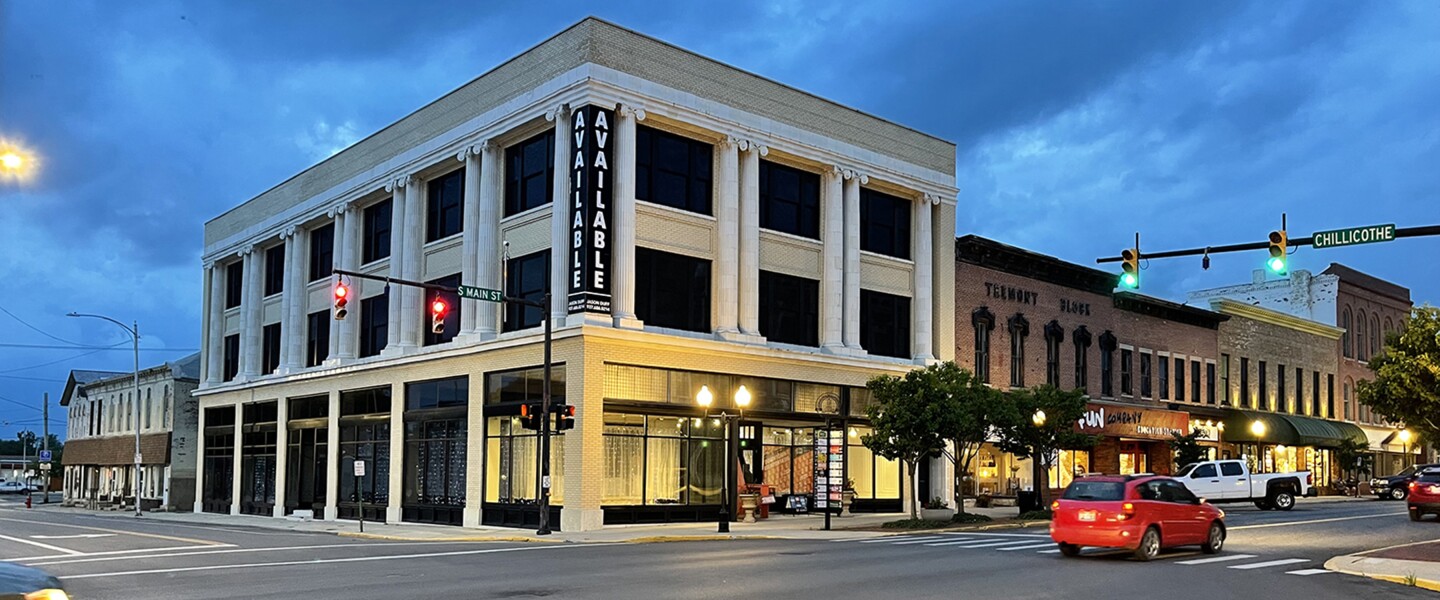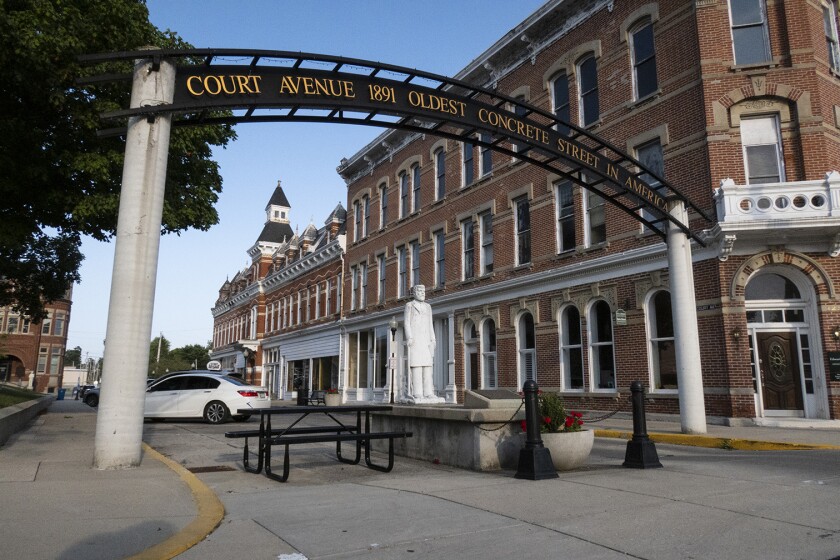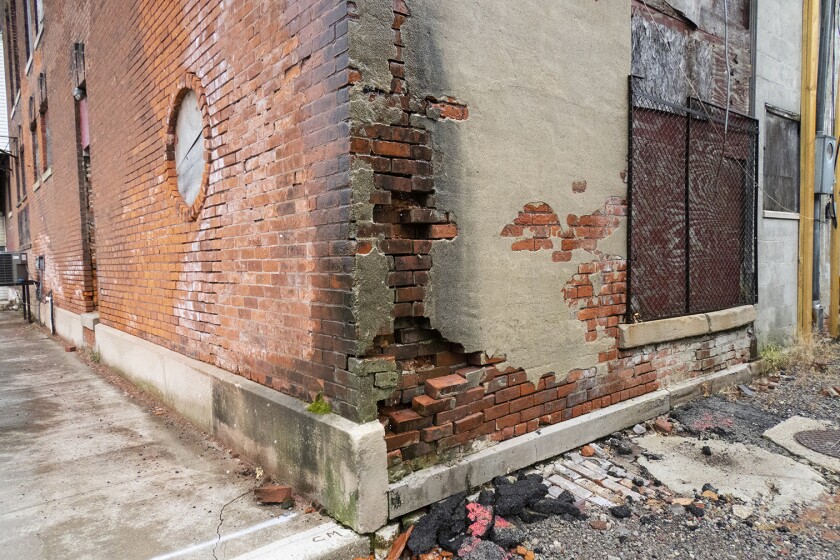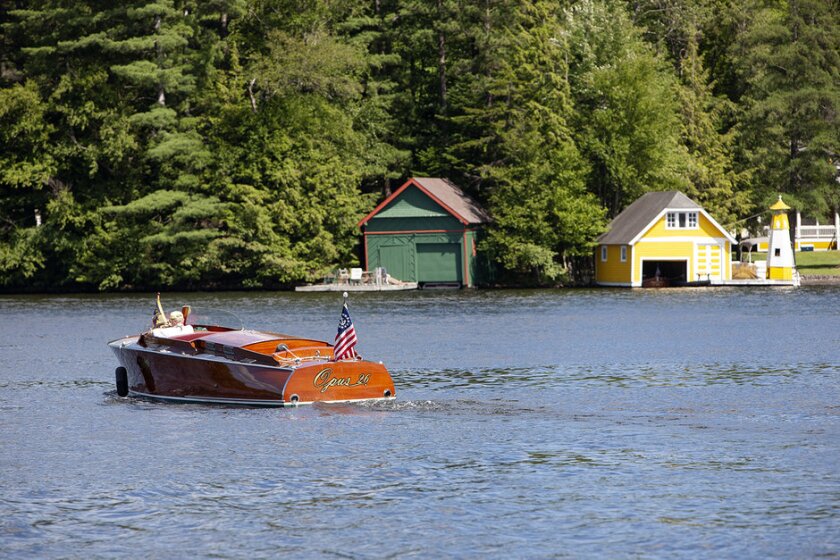
(Photos: David Kidd/Governing)
The time capsule, its existence previously unknown, had been discovered just a week earlier, when the four-story structure was demolished. The fate of the biggest commercial building on Van Wert’s Main Street was sealed when it partially collapsed last fall, after years of neglect.
Ownership of the now-empty lot will transfer to the nonprofit Van Wert County Foundation, headed by Seth Baker. “If we bought it 15 years ago for $150,000 and put a new roof on, we would have had this amazing building still sitting there, in great condition,” Baker says. A number of other buildings nearby will not survive another winter without intervention. But plans are underway not only to stabilize the town’s historic structures, but to restore and modernize the entire downtown area. “No one is out there to save us as a community,” Baker says, “other than us.”
Well, actually, someone might be. Over the last decade, another Ohio small town, 70 miles southeast of Van Wert, has managed to reverse its downward slide. Local developer Jason Duff seized the initiative in his struggling community of Bellefontaine, and turned a drab backwater into a tourist attraction. Now he has created an enterprise called Small Nation that is working with more than a dozen similar towns scattered over Ohio and Indiana. “It’s another community that’s doing awesome things that we can look to as a resource,” says Seth Baker. “Jason has done what we’re getting ready to do.”

From Ruins to Revival
Not very long ago, the most significant attraction in Bellefontaine (pronounced bell-fountain) was a block-long section of Court Avenue, billed as “the oldest concrete street in America.” A statue, plaque and picnic table stand at one end of the street, celebrating hometown hero George Bartholomew and his 130-year-old concrete creation. But in the past decade, Bellefontaine has created many more reasons to visit this town of 13,500, an hour northwest of Columbus. “We took an underrated town that was really struggling,” Jason Duff says, “and then actually made it cool again.”

Duff started out by purchasing a derelict property on Main Street with a loan from a sympathetic bank. “We’d done all these studies. We’d done all these needs assessments. We knew we needed a restaurant downtown,” he says. “That’s the first thing that we needed.”
After several tries, Jason convinced a successful restaurateur from another town to move into his first building, purchased for $67,000 at a sheriff’s sale for unpaid taxes. He borrowed another $100,000 to renovate the building and his tenant borrowed $200,000 for kitchen equipment and improvements. Six Hundred Downtown opened for business in 2011. The restaurant’s current owner has been featured on the Food Network, won multiple prizes, and most importantly, brought people back to downtown Bellefontaine. Now there are several other restaurants, strategically spread around the downtown area, each with its own personality and all working in partnership with Jason’s Small Nation team.

A Tour of Bellefontaine
Walking through Bellefontaine on a Friday in July, Jason frequently stops to tell a story, point out something of interest or visit with a shopkeeper. Head tilted upward, he gestures toward the ceiling of a mini-mall, painted to resemble puffy white clouds scattered across an azure sky, an idea he brought back from a Las Vegas casino.
The tour stops at a succession of restaurants and shops, each with its own origin story. Across the street, a brew pub was started by a group of guys who competed together in beard-growing contests. Opened in 2016, Brewfontaine has three times been declared the “best beer bar in Ohio ,” according to Craftbeer.com. Soon, Jason is inside the nearby City Sweets and Creamery. “We helped her with her name, her paint colors, her logo,” he says. Small Nation worked with the city to reverse the alley next door and punch out a drive-through window, all to help City Sweets compete with the chain doughnut shops.

A Town on the Brink
The Lincoln Highway was the first road to traverse the entire width of the United States. Completed in 1913, it passed right through the middle of Van Wert, bringing people and prosperity to town. Fifty years later, another highway was built, but this one bypassed the city entirely. Though the population has held steady at around 11,000 since that time, evidence of Van Wert’s decades-long decline as a business center is everywhere. The recent collapse of the Home Guards Building is the most recent reminder that time is running out for a revival.
In order to consolidate efforts with other community partners, in 2019 the Van Wert Foundation launched Van Wert Forward, a $90 million public-private initiative focused on revitalizing the moribund downtown. Plans call for the mixed-use redevelopment of several downtown buildings into first-floor commercial space with apartments on the second and third floors. Work on the first phase of reconstruction is on track to begin before the end of summer. If all goes according to schedule, the first batch of newly refurbished properties will be move-in ready within 12 to 18 months.

Unlike Bellefontaine, which is rebuilding itself largely with private funds, Van Wert is taking advantage of tax credits and grants to offset the cost of revitalizing the city. Several blocks downtown were recently added to the National Register of Historic Places, including more than 90 buildings. For the first phase of construction, “We’ll have $4.3 million in federal historic tax credits,” says Baker. Another $2.5 million in state historic tax credits has also been announced.
Keeping with historic preservation standards, the look and feel of building interiors will remain, especially corridors and stairwells. Doors and windows must meet stringent standards. Many of Van Wert’s old commercial buildings were altered over the years. Intricate brickwork was covered up with metal panels, screens and siding. A number of Main Street storefronts have already been stripped of these architectural additions, exposing long-forgotten original and ornamental facades. But not every alteration is destined to be demolished.
“Most historic districts like to cut their significance off in the '30s or the '40s,” says Baker. “For us, this would be really unfair.” He and his team fought to protect some architecture of the 1960s and beyond, in order to present a more complete picture of the town’s history.

Jenna Daily owns a bridal shop on Main Street in a storefront she leases from the foundation. Sometime next year, Van Wert Forward will pay to move her collection of dresses and accessories to a newly renovated location around the corner. A year later, when construction is finished, she will have the option of staying where she is or moving back into her original location. In addition to 37 residential units, her bridal shop is one of 14 commercial spaces included in the first phase of Van Wert’s downtown reconstruction.
Another Town in Search of a Solution
Fifty years ago, the city of Albion, Mich., was home to 15,000 people, many of them employed by nearby foundries. The town lays claim as home to the first Mother’s Day celebration and the children’s sport of tee ball. Detroit-based gangsters were known to frequent the balcony at the local theater. The factories began to close in the late '60s, and within 50 years the last foundry had shut down. Then the hospital closed, and the schools were absorbed by a neighboring district. Today the population is just half of what it once was. As in Van Wert, many of the building facades that line Albion’s red-brick main street have been superficially spruced up, but are in need of interior updates and structural repair.
The best hope for Albion may be its co-dependent relationship with Albion College, a small liberal arts school with financial problems of its own. The college needs a town with things to do if it hopes to compete for students. And the town needs students and their parents to support local business.

Interested parties in Albion have had conversations with Jason Duff of Small Nation. “Albion has no unique problems,” says Hurteau. “There’s nothing here that you wouldn’t see in Bellefontaine or in any other small town. It’s all about population. Who’s investing in the community? Bringing back Main Street.”
More Than Just Buildings
Albion, Van Wert and countless other midwestern towns have good reason to look closely at Bellefontaine. Ten years ago, 80 percent of Bellefontaine’s downtown storefronts were boarded up and abandoned. Small Nation team member Bo Alexander remembers what it was like. “When I was a child, I used to hear stories about people being scared to come here.” No longer. It has become a destination. “People come from Columbus or Springfield or Lima or Dayton to enjoy restaurants and shopping, says chamber of commerce President Ben Vollrath. “I’d say close to 50 percent of sales that happen in our downtown are from non-Logan County residents.”

“You can have the coolest buildings in the world. But you need to find a way to unlock people’s creative talent, their unique ideas, and get them paired with resources, coaching and support,” Jason Duff says. “That’s how we start rebuilding a town.”
Related Articles













